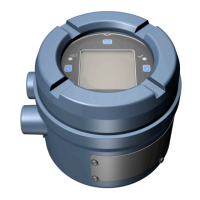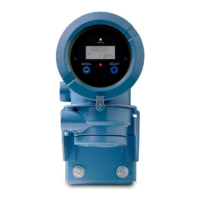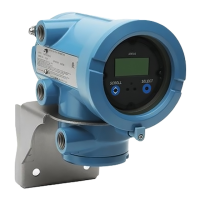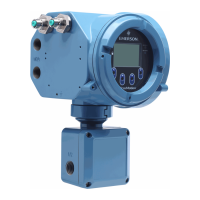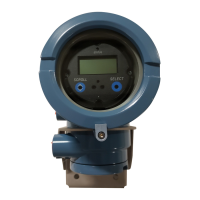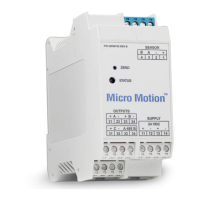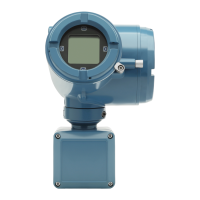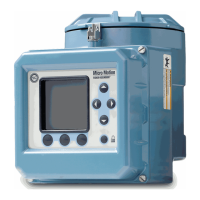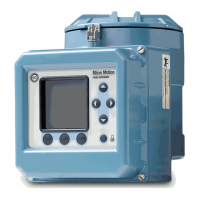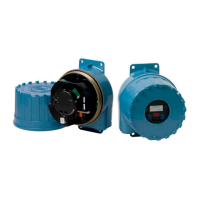Configuration and Use Manual 75
Optional Configuration
Required Configuration Optional ConfigurationUsing the TransmitterFlowmeter Startup Required Configuration Optional ConfigurationUsing the TransmitterFlowmeter Startup Required Configuration Optional ConfigurationUsing the TransmitterFlowmeter Startup Required Configuration Optional ConfigurationUsing the TransmitterFlowmeter Startup
8.9.1 Effects of Special mode
In Special mode:
• Not all process variables are updated. The process variables listed below are always updated:
- Mass flow
-Volume flow
- Gas standard volume flow
- Density
- Temperature
-Drive gain
- LPO amplitude
- Status (contains Event 1 and Event 2)
- Raw tube frequency
- Mass total
- Volume total
- Gas standard volume total
- API temperature-corrected volume total
- API temperature-corrected density
- API temperature-corrected volume flow
- API batch weighted average temperature
- API batch weighted average density
The process variables listed below are updated only when the petroleum measurement
application is not enabled:
- RPO amplitude
-Board temperature
- Core input voltage
- Mass inventory
- Volume inventory
- Gas standard volume inventory
All other process variables are not polled at all. The omitted process variables will remain at
the values they held before Special mode was implemented.
• Calibration data is not refreshed.
• Discrete event status is not polled.
• The enhanced density application is not available.
Micro Motion recommends the following:
• Do not use Special mode unless required by your application. Contact Micro Motion before
setting Update Rate to Special.
• If Special mode is required, ensure that all required data is being updated.
• Do not perform any calibrations while in Special mode.
• Do not restore the factory zero or prior zero.
• Do not use discrete events (the dual-setpoint event model) while in Special mode. Instead, use
Event 1 and Event 2 from the single-setpoint event model. See Section 8.11.

